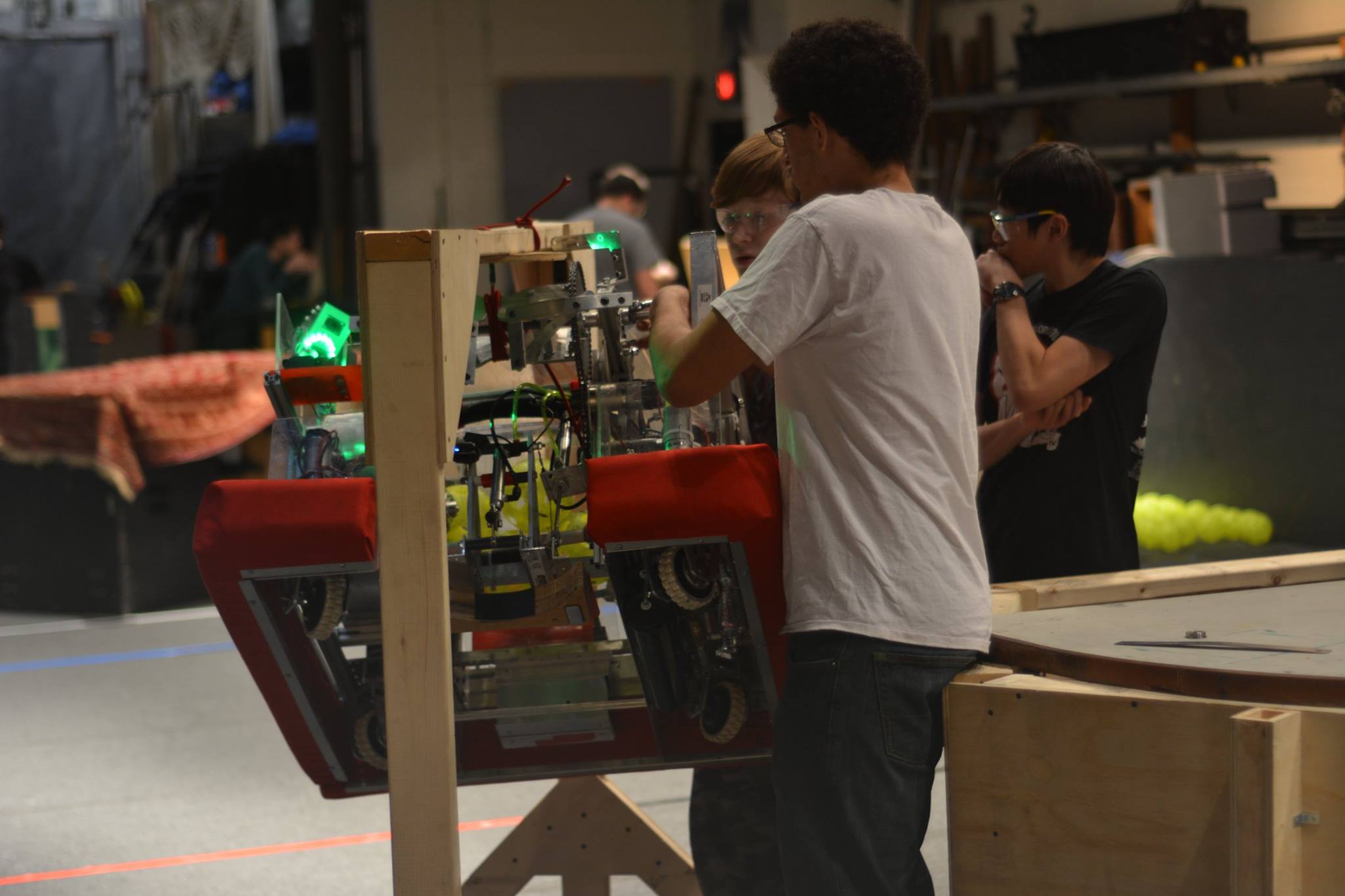2017 Robot

The 2017 game is proving to be one of the most challenging to date for our experienced team. Designed by Disney, FIRST STEAMWORKS aims to challenge teams to create mechanisms capable of delivering 11 inch diameter gears to human players stationed on the Jules Verne inspired airship. Teams also have the task of shooting 5 inch diameter wiffle balls to add fuel to the boiler, sending steam to fuel the airship. For a more detailed description of the game, see the the official video reveal.
Robot Abilities
- Swerve Drive: Our new swerve system allowed each wheel of our robot to run independently in full 360 degree motion. This gives the robot unprecedented speed and agility allowing us to deliver gears in under 15 seconds and offering a critical ingame advantage.
- High Goal Shooter: Our robot had the capacity to collect fuel from the delivery station in a top-mounted hopper leading to our side-positioned flywheel. This allows the robot to shoot 10 balls in autonomous if necessary and contribute to the alliance with the goal of flying the airship. The robot could hold 18 balls and are able to achieve 90% accuracy in testing. After our first competition, we removed our fuel shooter to make room for extra climbing CIMs.
- Pneumatic Gear Picker: Pneumatic Gear Picker: Unlike most robots, we have the ability to pick up gears off the floor in an active delivery system. Using a pneumatically actuated hook we are able to quickly collect gears deposited from the delivery station and place them on the airship’s springs. This allows up to be very versatile and collect any gears left by other teams, maximizing efficiency of the alliance.
- Climber: Utilizing a massive gear reduction and milled slots into a rotating plate, we are able to latch onto a knot, pulling our 110 pound robot up into the scoring an onto the rising airship.
Programming
Just like in previous years, we used Python for our robot code. In addition to our robot code, we developed a dashboard for our touchscreen driver station. It is written in JavaScript/HTML/CSS, and communicates with the robot through a python-based tornado server. It is based on the FRCDashboard framework we developed last year.
As an addendum to our dashboard, we used a company-donated VUFINE wearable display to build a heads-up robot monitor which assisted our driver. The display allowed easy viewing of our robot's camera feed and some vital statistics of the robot. To build the display, we used a modified version of FRC Dashboard, connected with our standard dashboard through NetworkTables for ease of control.
We drive using a pilot-copilot operating system with one driver controlling robot motion and the other controlling all other robot functions. This allows each driver to control their own independent task, making operating the robot more efficient.
Our vision system uses newly introduced WPILib cscore to operate three cameras and preform image processing on gear vision target to deliver gears to the airship.
As usual, our code is open source, and can be found on our GitHub organization. Here are some quick links:
- Robot code
- Dashboard code
- VictiScout scouting system
- vs scouting data analysis system
- VUFINE heads-up display code
Competition Performance
During the 2017 season, we were part of the first-seeded alliance at the Northern Virginia District Event, then made it to the finals at the Northern Maryland District Event. At the Chesapeake District Championship sponsored by Booz Allen Hamilton, we qualified for the FIRST World Championship for the second year in a row. In St. Louis, we made it further than ever before; narrowly losing in a quarterfinal tiebreaker. We are very proud of our performance and are constantly working to do even better next season.
This robot is no longer in use, and has been put on display in the George Mason High School Library.







 2017
2017